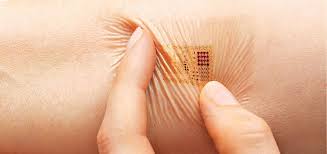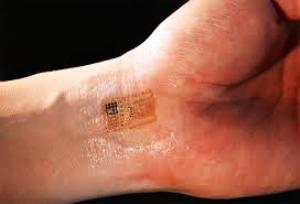Nano_ Biosensors Convert biological response to an electrical signal (based on Nano-Micro PhD)
Researcher and Researcher:
Engineer Afshin Rashid
Note: Biosensors or biologically based sensors now cover a wide range of applications such as the pharmaceutical, food, environmental, military, especially biowar industries .
The development of biosensors to measure dissolved oxygen concentrations in the blood began. This sensor is also called COBD by coating the surface of the electrode with an enzyme that is also called a gaseous electrode . The sensor was later used to oxidize glucose. The sensor was used to measure blood sugar. In the same Bapvshandn electrode by an enzyme that has the ability to convert urea into ammonium carbonate in the electrode material ++ ion, NH4 biosensors that could have made the urea in the blood or urine measure.
Each of these two early biosensors used a different transducer in their signal conversion section . In the first type, the blood glucose was measured by measuring the electric current produced (amprometric), while in the urea sensor the urea concentration was measured based on the amount of electric charge generated in the sensor electrodes (potentiometric) . Need to see a physician and only on the basis of information provided by a COBD or Doctor-Board-on-Chip to diagnose the type of disease and then inject it into the bloodstream. This will cause the required dose of the drug to be directly reduced by the side effects of the Effect-Side drug , because the drug is too low to be delivered to the body where it is needed. It is the conversion of a drug directly into a biosensor that converts a biological response into an electrical signal and includes two major components: the receptor receptor and the detector detector. The selectivity of a biosensor is determined by the acceptor. Enzymes, antibodies, and lipid layers (lipids) are good examples of receptors.
The task of the detector is to convert the physical or chemical changes by detecting the analyte to a clear factor that the detectors have the ability to select in the type of reaction of the electrical signal. They don't have the perfect .
Types of detectors (or transducers or transducers or detectors) used in biosensors include:
Electrochemical, optical, piezoelectric and thermal. In the electrochemical type of operation it becomes one of the following : amprometric, potentiometric, vamped. The most common electrodes used in type 1 potentiometers include Electrode Glass Electrode, Selective-Ion Ion Electrode, and FET sensitive-Ion or ISFET. In general, a biosensor comprises an immobilized static biological system such as a cell batch, myczyme, or an antibody and a measuring device. In the presence of a certain molecule, the biological system changes the properties of the environment. The device that is sensitive to these changes produces a signal that is proportional to the amount or type of change. This signal can then be converted into a comprehensible signal for electronic devices.
The advantages of biosensors over other available measurement devices can be summarized as follows:
He expressed:
Many nonpolar molecules form in living organs that do not respond to most existing measurement systems . Biosensors can receive this response. The basis of their work is based on the immobilized static biological system embedded in them, thus having no adverse effects on other tissues. These sensors allow continuous and very rapid control of metabolic activity.





